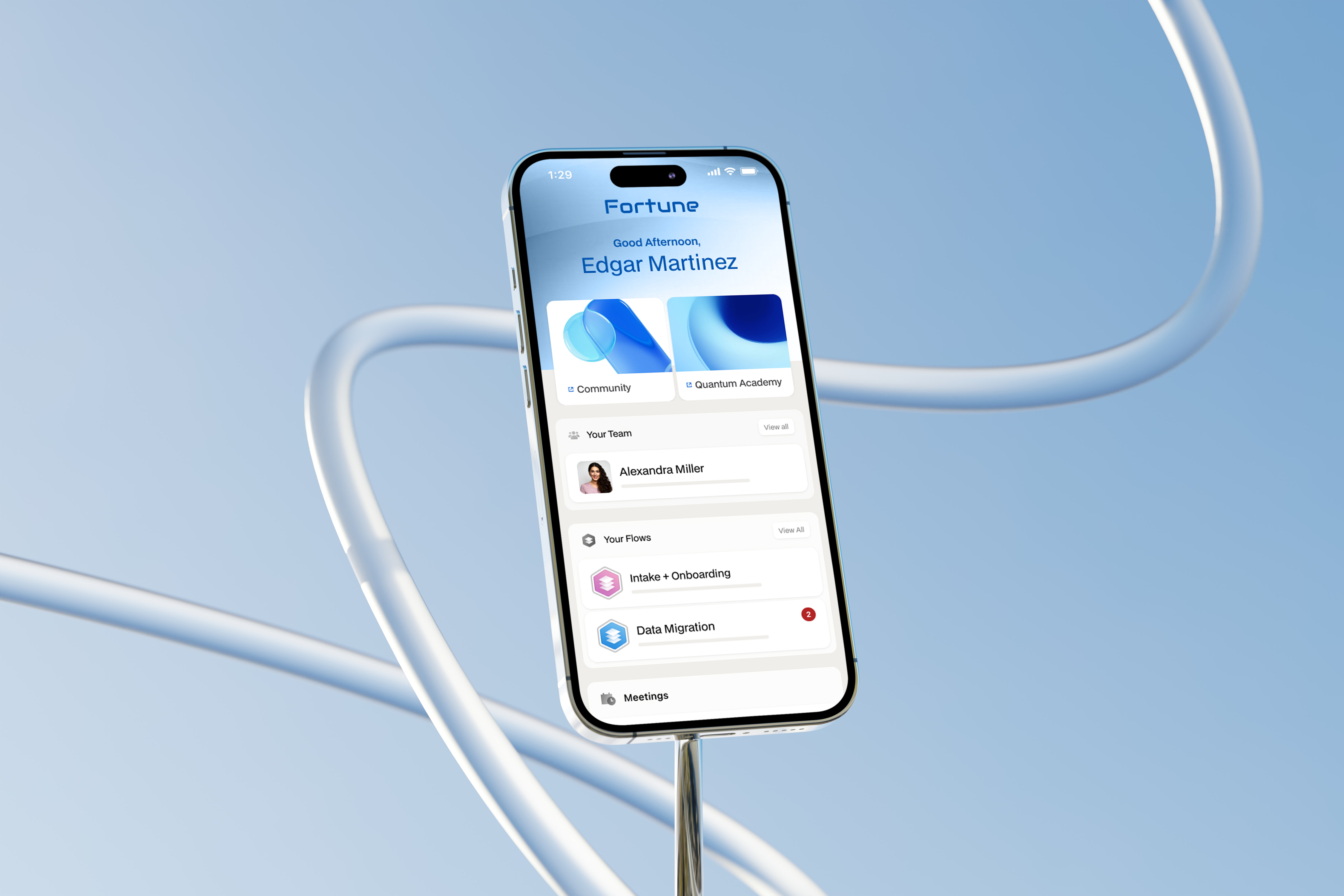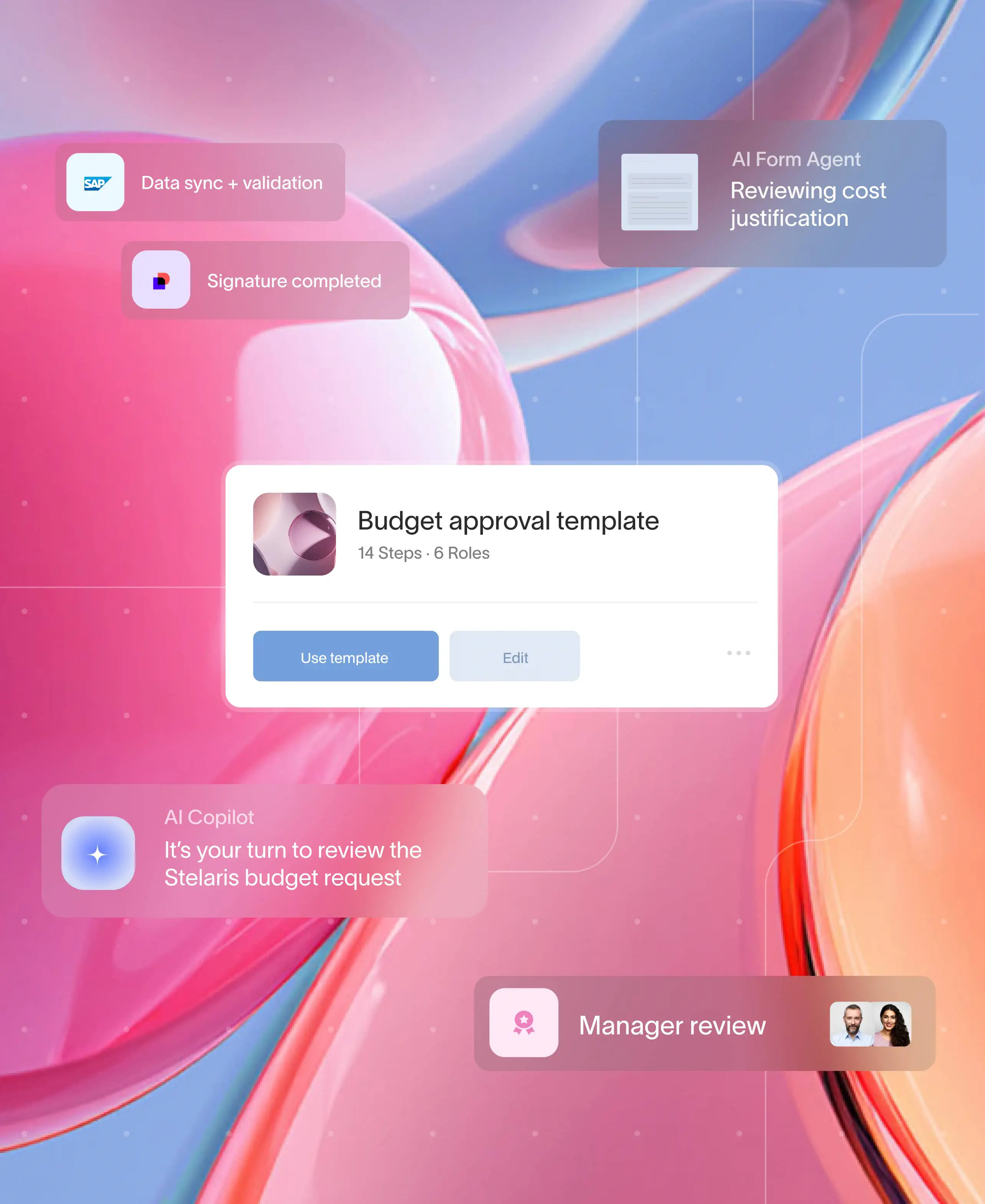
At a glance
- Learn what marketing client onboarding is and why it's the #1 driver of long-term retention for agencies.
- Discover the most common onboarding pitfalls, like poor communication and manual processes, and how to avoid them.
- Explore the 8-step marketing client onboarding framework used by top-performing agencies worldwide.
- Learn how to automate onboarding without losing the personal touch using Moxo’s branded portals and workflow orchestration.
Your first impression determines everything
A good onboarding process builds trust and sets clear expectations from day one. Here's the brutal truth: most marketing agencies lose their new clients before the real work even begins.
Companies lose 40% of new clients in the first month from a lack of clarity on next steps. That's not a conversion problem, it's an onboarding disaster. This guide shows you how to turn that statistic upside down with a systematic approach that transforms skeptical prospects into loyal advocates.
You'll learn the exact framework that Peninsula Visa used to cut client drop-offs by 70%, plus the automated workflows that help 1852 Media handle 30% more clients without burning out their team.
What makes onboarding world-class
World-class marketing client onboarding isn't about fancy welcome packages or lengthy discovery calls. It's a systematic, empathetic process that delivers immediate value while setting crystal-clear expectations for long-term success.
The difference between average and exceptional onboarding comes down to three core elements:
The business impact is massive
According to HubSpot, acquiring new customers is 5–25x costlier than retaining them. When you nail the onboarding experience, you're not just keeping clients, you're turning them into referral engines. 69% of customers will recommend your agency after a strong onboarding process.
BNP Paribas discovered this firsthand when it restructured its client onboarding. By implementing systematic workflows, they cut onboarding time by 50% while improving client satisfaction scores across the board.
The 8-step marketing client onboarding framework
This framework has been tested across dozens of agencies, from boutique consultancies to enterprise-level operations. Each step builds on the previous one, creating a seamless experience that clients actually enjoy.
Step 1: Pre-onboarding preparation
Before your kickoff call, gather everything you need. Create a client folder with their signed contract, discovery notes, and initial strategy thoughts. Send a welcome email with:
- Meeting agenda and what to expect
- Pre-call questionnaire (keep it under 10 questions)
- Your team introductions with photos and roles
- Next 30-day timeline overview
Timeline: 24-48 hours after contract signing
Step 2: Discovery deep-dive session
This isn't a sales call, it's a strategy session. Your goal is understanding their business, not impressing them with your knowledge.
Cover:
- Current marketing challenges and pain points
- Success metrics and KPIs they care about
- Internal processes and approval chains
- Existing tools and systems
- Brand guidelines and creative preferences
Pro tip: Record this call (with permission) and share the recording with your team. It eliminates the telephone game effect.
Timeline: Within the first week
Step 3: Strategy presentation and approval
Transform your discovery insights into a concrete action plan.
Present:
- 90-day roadmap with specific milestones
- Resource allocation and timeline
- Expected outcomes with realistic metrics
- Communication cadence and reporting schedule
Make this visual. Clients retain information better when they can see the journey ahead.
Timeline: 3-5 days after discovery
Step 4: Technical setup and access
This is where most agencies create chaos. Streamline it with a systematic approach:
- Create a shared checklist visible to both teams
- Batch similar tasks (all account setups, then all integrations)
- Set up automated notifications for completed items
- Provide backup contacts for technical issues
Sherwood Partners automated this entire step using workflow templates, reducing setup time from days to hours.
Timeline: Week 2
Step 5: Team introductions and role clarity
Your client needs to know who does what and when to contact whom.
Create:
- Team org chart with contact information
- Role-specific responsibilities
- Escalation paths for different issues
- Backup contacts for each role
Timeline: End of week 2
Step 6: First campaign or project launch
This is your "quick win" moment. Whether it's launching their first ad campaign, publishing initial content, or setting up analytics tracking, deliver something tangible they can see and share internally.
Peninsula Visa calls this their "momentum moment"—the point where clients shift from skeptical to excited about the partnership.
Timeline: Week 3
Step 7: Reporting and feedback loop setup
Establish how you'll communicate progress and results:
- Dashboard access and training
- Reporting schedule (weekly, biweekly, monthly)
- Feedback collection process
- Performance review cadence
Timeline: Week 3-4
Step 8: Handoff to account management
Transition from onboarding specialist to ongoing account manager:
- Complete project documentation
- Schedule first quarterly business review
- Set up automated check-ins
- Create client success plan for the next 6 months
Timeline: End of month 1
Automation that actually works
Manual onboarding doesn't scale and creates too many opportunities for things to fall through the cracks. The agencies that handle 50+ clients simultaneously all use systematic automation.
Email sequences that guide, don't overwhelm
"The biggest difference-maker is automated email sequences that deliver value immediately after signup... For one client, we built a 7-day nurture sequence with videos for each task; it reduced support tickets by 60% and increased product adoption." - Magee Clegg, CEO, Cleartail Marketing
Create email sequences for:
- Welcome and expectation setting
- Pre-meeting preparation
- Post-meeting follow-ups
- Technical setup guidance
- Progress updates and next steps
Task automation and notifications
Automate routine tasks like:
- Account creation across platforms
- Team member notifications
- Client portal setup
- Document sharing and approvals
- Meeting scheduling and reminders
Falconi Consulting automated their multi-stakeholder approval process, cutting project delays by 40% while keeping all parties informed in real-time.
Progress tracking and visibility
Both your team and clients should see progress in real-time.
Use:
- Shared project boards with status updates
- Automated milestone notifications
- Progress bars showing completion percentage
- Next-step previews to maintain momentum
Common pitfalls and how to avoid them
Even experienced agencies make these onboarding mistakes. Here's how to avoid them:
Information overload
The problem: Dumping everything at once overwhelms clients and creates decision paralysis.
The solution: Drip-feed information based on immediate needs. Share strategy details during strategy sessions, technical information during setup phases, and reporting details when launching campaigns.
Unclear expectations
The problem: 43.6% of onboarding failures are due to poor client engagement, often caused by unclear expectations about timeline, responsibilities, or deliverables.
The solution: Create written documentation for everything. Use project management tools that show exactly who's responsible for what by when.
Slow manual processes
The problem: Manual handoffs create delays and inconsistency.
The solution: Onboarding templates improve effectiveness by 20% and reduce time spent in meetings by up to 86%. Build repeatable workflows that guide your team through each step.
Poor communication
The problem: Clients feel left in the dark between meetings.
The solution: Set up automated progress updates and create multiple communication channels (email, portal, messaging) for different types of updates.
No feedback mechanism
The problem: You can't improve what you don't measure.
The solution: Survey clients at each major milestone. Ask what's working, what's confusing, and what they wish was different.
How Moxo transforms marketing client onboarding

The agencies that consistently deliver world-class onboarding experiences use purpose-built platforms instead of cobbling together multiple tools. Moxo's client onboarding workflows address every challenge mentioned in this guide.
Automated workflow orchestration
Moxo's workflow builder creates visual templates for your entire onboarding process. Set up automated triggers that move clients through each step while keeping your team informed of progress and next actions.
RevGen, a hybrid marketing and demand generation agency, reduced onboarding time by 70% (from 2 weeks to 4 days) with Moxo and increased client capacity per account manager by 50%.
White-labeled client experience
Your clients see your brand, not another software platform. Moxo's client portals provide a professional, branded experience where clients can track progress, upload documents, and communicate with your team.
Keebeck Wealth Management chose Moxo specifically for the white-labeled portals that match their premium brand positioning. Their high-net-worth clients expect elegance, and Moxo delivers it.
Document collection without the chaos
Moxo's document collection features eliminate the back-and-forth of email attachments. Clients upload everything to secure, organized folders with automatic notifications when submissions are complete.
1852 Media handles 30% more clients per manager using Moxo's automated document workflows. No more digging through email chains to find the latest creative brief or signed contract.
AI-powered assistance
Moxo's Agentic AI helps review forms, provides support responses, and sends intelligent reminders to keep projects moving. It's like having an extra team member dedicated to client success.
Real-time visibility for everyone
Both your team and clients see exactly where projects stand. Automated status updates, milestone celebrations, and next-step notifications keep everyone aligned without manual coordination.
Bank of Queensland reduced project delays by implementing Moxo's real-time visibility features. Loan officers and clients always know what's needed next and when to expect results.
Making it happen
World-class marketing client onboarding isn't about perfection; it's about consistency, clarity, and continuous improvement. The agencies that win long-term relationships are the ones that make onboarding feel effortless for clients while running efficiently for their teams.
Start with the 8-step framework outlined above, then layer in automation where it makes sense. Most importantly, ask for feedback at every step and adjust based on what you learn.
Get started with Moxo to see how automated workflows can transform your client onboarding experience.
FAQs
How long should marketing client onboarding take?
Most effective onboarding programs run 30-45 days for comprehensive services. The key is delivering value within the first week while completing all setup and strategy work within the first month. Companies lose 40% of new clients in the first month from a lack of clarity on next steps, so frontload communication and quick wins.
What's the biggest onboarding mistake agencies make?
Information overload. Agencies often dump everything at once, strategy, processes, tools, and expectations, which overwhelms clients. Instead, drip-feed information based on immediate needs and current project phases.
Should onboarding be handled by account managers or specialists?
Dedicated onboarding specialists typically deliver better results because they're focused exclusively on getting clients set up for success. Once onboarding completes, transition to ongoing account management. This specialization allows both roles to focus on what they do best.
How do you measure onboarding success?
Track three key metrics: time to first value (how quickly clients see results), completion rates (percentage who finish onboarding), and satisfaction scores at 30 and 90 days. 86% of clients are more likely to stay after a positive onboarding experience, so satisfaction directly correlates with retention.
Can onboarding be automated without losing the personal touch?
Yes, when done strategically. Automate routine tasks like account setup, document collection, and progress updates, but keep human touchpoints for strategy discussions, creative feedback, and relationship building. The goal is to eliminate busy work, not personal connection.





